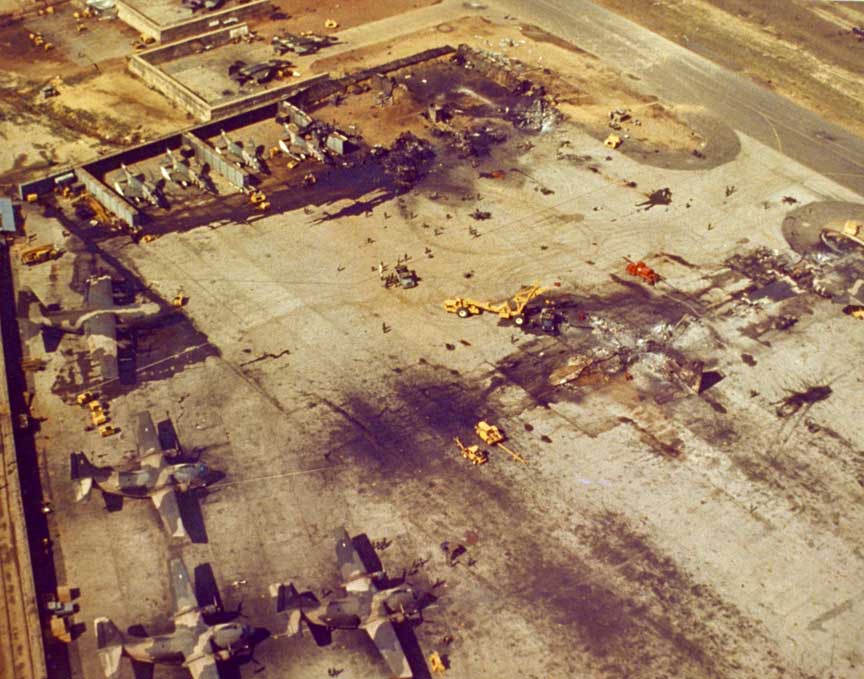February 7, 1965
US Base at Plieku Attacked

Camp Halloway after attack
Viet Cong troops attack a helicopter base at Camp Halloway. The troops blow up the barracks of US military advisors at Pleiku, killing 8 Americans and wounding 126. President Johnson orders immediate reprisals, as 49 US Navy jets attack North Vietnam.
Pleiku, a strategic market town in Vietnam’s Central Highlands, became a flashpoint in the growing conflict between the United States and North Vietnam in early 1965. Just three miles from the town lay Camp Holloway, a key American military installation used by U.S. Special Forces, military advisors, and support personnel. The base was vital to the U.S. mission in South Vietnam, hosting a number of helicopters and transport aircraft that played a crucial role in reconnaissance and logistics.
On the night of February 6–7, 1965, a Viet Cong commando unit infiltrated the perimeter of Camp Holloway. Under the cover of darkness, they launched a surprise attack using small arms and mortars. The assault resulted in the deaths of eight American servicemen, injuries to over one hundred others, and the destruction of ten U.S. aircraft. The bold and devastating strike underscored the vulnerability of American positions and served as a stark reminder of the Viet Cong’s ability to strike deep within ostensibly secure areas.
The Pleiku attack quickly became a turning point in American policy. Many within the Johnson administration had already been urging a tougher military response to North Vietnamese aggression. The attack at Camp Holloway provided the political and psychological catalyst needed to shift from advisory support to direct retaliatory action. President Lyndon B. Johnson convened an emergency meeting of his top national security advisors and brought in congressional leaders including Senate Majority Leader Mike Mansfield and Speaker of the House John McCormack. Though Mansfield voiced caution, the prevailing consensus supported escalation. Johnson approved Operation Flaming Dart, a retaliatory airstrike against North Vietnamese targets.
Hours later, aircraft from the USS Ranger were launched against a North Vietnamese army barracks near Dong Hoi, just north of the demilitarized zone. This marked the first overt U.S. air attack against North Vietnam and signaled the beginning of a new, more aggressive phase of the war. The events at Pleiku and the swift military response would soon pave the way for the sustained bombing campaign known as Operation Rolling Thunder, as the United States slid further into a full-scale war in Southeast Asia.
 >
>